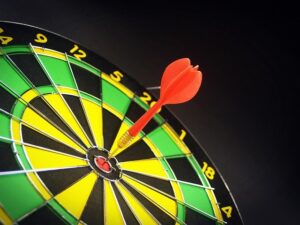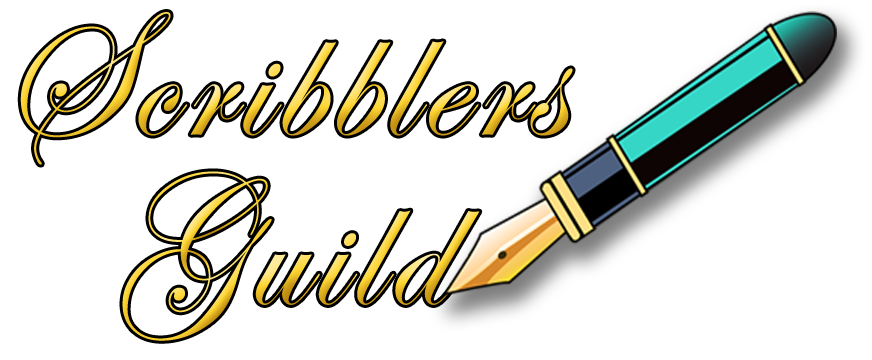Essay Series — Blog Post
Part Five — How to Write a Blog Post
1. Why write a blog? — Your Purpose

Your purpose informs and directs everything you write, from the material you include, to your style, voice and content.
Once you figure out WHY you want to write it, you’ll be well on the way to knowing what you want to write about. Your Purpose is a through-line that ties everything together, giving you a roadmap which lets you see what fits and what doesn’t. But as long as you’re missing this key ingredient of Purpose, your blog will continue to be disjointed, scattered and lacking in cohesion.
Defining your Purpose gives you clarity and motivation, saving you a lot of time and effort because you won’t end up throwing out pages and pages of words that don’t fit your blog’s theme.
When you know the point you want to make and the conclusion you want your reader to reach, it becomes much easier for you to compile only the discussion elements that lead to that inevitable end and ignore any that don’t.
When you have a strong, coherent structure held together by a single idea, message or story question, your reader can’t help but be engaged, pulled along by the power of your post’s narrative drive.
Here are a few purposes of blogs:
- Making money: selling, promotion and marketing of your own products and services, affiliate sales and promotion, advertising, list building
- Persuasion to your point of view, proselytize, influence, advocate
- Personal stories, sharing with family and friends, staying in touch, online diary, leave a legacy
- Teaching, education, helping others
- Building a community of like-minded people
- Sharing philosophy, hobbies, pastimes
- Make a difference, raising money for worthy causes
Why a reader would read one:
- Learn about a subject – education, skills training
- Feel part of a community of like-minded people
- Entertainment, especially storytelling and humorous blogs
- Keeping up-to-date on current events, products, tv and movies
2. Who will read it? — Your Audience

On some level, you know that there’s a message or idea that’s yearning to be explored through this blog. Perhaps it’s a passion project you want to discuss, so you can connect with others who share an interest, or perhaps it’s something you want to know more about and you’re using your blog posts to share your learning path. Or maybe it’s a subject you already know a lot about and want to offer your expertise to others, or even monetize it so you can quit your day job.
In any case, you need to ask yourself, could I write about this for at least a year without running out of ideas? Do I have enough topics to write at least one post a week for 52 weeks? Or more? Even indefinitely? And, will it keep my interest over the long haul? Far too many blogs are abandoned when the blogger loses interest or runs out of topics.
And here’s the big question: Who am I writing this for?
When you write anything, including blog posts, you need to know who will be reading it.
Make a list of everyone who you think might be interested in your story — family, friends, people with interests and history common to you and to the story you want to tell.
Then list all the characteristics that the people on your first list have in common.
Think about how your story’s details and message might change, based on your answers to these questions, as well as the way you write it. If you’re writing for family and friends, the characteristics and experiences they share will be different from those shared by a specifically targeted audience, such as trauma survivors, arctic explorers or dog trainers. Think about who your blog is aimed at and write it using the style and language that they will understand and relate to.
The more specifically you niche down, the more engaged will be the audience who reads it.
You can’t write for “everybody”. If your blog is about how to train horses or the political future of Ukraine, not everyone will care. The better you know your ideal audience, the more focused and specific your blog posts will be and the better they will resonate with the readers you’ve targeted.
3. What should you write? — Your Content

As we covered in the previous four posts, your content should follow a structure that makes it easy for your audience to grasp the point of the post.
Each post should focus on one specific topic. The blog as a whole might be about dog training, for example, but specific topics could be: teaching a dog to sit, taking a treat gently, giving up a toy or standing still for grooming. And each of these could also be broken down into smaller components. Grooming, for example, could be simply getting the dog used to the brush.
So, the more granular your posts become, the more valuable and information-rich they are for the specific audience you’re trying to reach.
Another thing to be aware of is your author’s voice (also covered in the previous post). The words you use, your personal opinions, beliefs and views, your vocabulary, the way you put your words together and the emotional tone of your writing all speak to the reader in a particular way. It could be serious, humorous, offhand, practical, detailed, poetic, mocking, sarcastic, reverential or any of dozens of moods and attitudes which we take for granted when we’re involved in in-person conversations, but which become more difficult when writing.
Without the aspect of facial expression and body language, it’s easy to misinterpret humour, for example, as mean-spirited criticism. Read over your post several times as if you’re a reader who’s seeing it for the first time. If something doesn’t feel quite right, chances are, someone will take it the wrong way, so make sure that what your words say is exactly what you meant to say. A thesaurus is a very valuable tool to make sure you’re using precisely the right word to convey a particular concept.
4. What’s the point? — Your Outcomes

Finally, what is the point of your post? What specific change do you want to achieve in your reader’s mind?
First, what do you, the author, want to get out of it? This goes back to your purpose — why are you writing this particular post? What impression do you want to leave?
And second, what do you want your reader to get out of the article? Do you want them to do something, believe something, accomplish something? Try something, think differently, learn something?
When you start out with this objective in mind, writing the post becomes much easier, because it means that you’re less likely to stray from the main idea. If you know you want your reader to know how to teach a dog to accept a grooming brush, you’re not likely to veer off into barking and biting.
Knowing your desired outcomes ahead of time keeps you on track and prevents you from going down rabbit holes. Those wicked bunnies are very tempting, but when they draw you and your reader away from the point of your article, you’re doing yourself no favours. Stick to your overall theme and the specific topic of the post with your desired objective in the forefront of your mind, and your article will be clear and focused.
5. Putting it together — Your Structure
 Here’s where our previous four posts about essays kick in. By now, you should have a good idea of how an essay is constructed. No matter what kind of blog you mean to write, the structure should be pretty much the same.
Here’s where our previous four posts about essays kick in. By now, you should have a good idea of how an essay is constructed. No matter what kind of blog you mean to write, the structure should be pretty much the same.
Great Headline:
A blog post needs a headline, just like a newspaper article, book chapter or documentary. The headline encapsulates what the post is about. A title or headline should grab the reader’s attention and let them know that it’s something they are interested in. Don’t be tricked into thinking a creative, clever or humorous title is preferable to one that states clearly what the article is about. A headline like “Five Steps to a Well-Groomed Dog” is better than “Prettiest Pooch on the Planet”, because it tells the reader immediately what they’re going to get if they invest time in reading the post.
Great Lead (first paragraph):
The first paragraph must capture the reader’s interest. It opens a mental loop, often by asking a question. Humans are curious, so the lead grabs their interest by engaging that curiosity and raising a question in the reader’s mind. Try to create mystery and raise tension by posing a puzzle, dilemma, enigma or problem that challenges the reader to try to answer. The first paragraph then “leads” them into the rest of the article.
Body:
Just as we discussed in our previous posts on essays, blog posts follow a similar pattern. Each body paragraph deals with a single sub-topic which relates back to the main subject of the article. The paragraphs follow a logical sequence, a chain of cause and effect which tracks the author’s thought processes to a logical conclusion.
Most blog posts are short, running anywhere from 400-700 words, or 3-5 paragraphs. However, posts can and often do, run longer, up to 1500 words or more. Longer and meatier posts are considered Cornerstone or Pillar posts and are more likely to attract the attention of ranking bots which scour the web looking for relevant content.
Close:
This is your conclusion paragraph. It’s the point of the post. This is the outcome that you’ve been leading your reader towards throughout the entire article.
Your close should end with a call to action (CTA). This could be as simple as asking them to leave a comment, or it could be asking for a sale or getting them to subscribe to a newsletter. You could send them to a link where they can download a transcription or listen to a podcast, watch a video or access a worksheet.
The close should satisfy the reader, answer their questions, close those mental loops and give them a good takeaway. Make sure it’s clear what you want them to do.
6. Next Steps

And finally, when you’re preparing to write a post, it’s a good idea to follow these four outline steps:
1. Decide on your topic (be specific)
2. Write a catchy opening line
3. List your main discussion points
4. Decide on your outcome(s) and specific call-to-action
If you do that each time, you’ll have less struggle with writing and sharing your posts regularly. Doing this quick outline exercise can also help you line up a bunch of topics ahead of time so that you never run out of things to write about.
For a more detailed guide on planning your blog posts, you can download my own template that I use every time I plan an article.
Click this link to download my template for writing blog posts.
Next week, we’ll go over how to format your posts so readers who skim the post still get the gist of your content, and how to schedule them so that you can begin to build up a backlog of articles for those times when you don’t have time to write.
Happy Writing!

If this information is useful, or you have anything you’d like to add, please leave a comment below.
Related Posts:
Beverley Hanna
Trained as an artist in the late 1960’s and early 1970’s, I was one of the first creatives to be employed in the computer graphics industry in Toronto during the early 1980’s. For several years, I exhibited my animal portraiture in Canada and the U.S. but when my parents needed care, I began writing as a way to stay close to them. I’ve been writing ever since. I run a highly successful local writer’s circle, teaching the craft and techniques of good writing. Many of my students have gone on to publish works of their own. I create courses aimed at seniors who wish to write memoirs, with a focus on the psychology of creatives and the alleviation of procrastination and writer's block.
